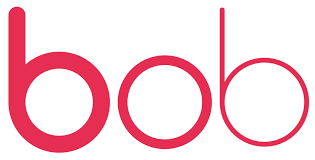People are what makes every business tick. As your organisation grows, it’s vital that you manage your employees effectively. From hiring and onboarding through to attendance tracking and performance reviews, these software options can help you maximise your business potential.
Compare HR Software
Reviews
Monthly price from
£4 per employee
Best for
Small and medium businesses
Customer support
Email and live chat
43 reviews
Source: Trustpilot
Score: 4.1/5
Monthly price from
Bespoke
Best for
Medium and large businesses
Customer support
Phone, email and live chat
14458 reviews
Source: Trustpilot
Score: 4.6/5
Monthly price from
Bespoke
Best for
Small and medium businesses
Customer support
Phone (US) and email
9 reviews
Source: Trustpilot
Score: 2.9/5
Monthly price from
£4 per employee
Best for
Small and medium businesses
Customer support
Email and live chat
78 reviews
Source: Trustpilot
Score: 4.8/5
Monthly price from
£1.50 per employee
Best for
Small and medium businesses
Customer support
Phone and live chat
3 reviews
Source: Trustpilot
Score: 4/5
Monthly price from
Free up to 5 users
Best for
Small, medium and large businesses
Customer support
Phone, email and live chat
299 reviews
Source: Trustpilot
Score: 1.9/5
Monthly price from
Bespoke
Best for
Small and medium businesses
Customer support
Phone, email and live chat
15 reviews
Source: Trustpilot
Score: 3.9/5
Monthly price from
£2.50 per employee
Best for
Small businesses
Customer support
Email and phone
0 reviews
Source: N/A
Score: /5
Our comparison table includes providers that we receive commission from. Our table is ordered according to our commercial arrangements.
Our guide to HR software
People are at the heart of every successful company. Whether you’re running a tiny startup or a growing business, the way in which you deal with the people you’re working with is a crucial consideration.
This is where human resources steps in. In the past, businesses may have had to rely on large HR departments to deal with the logistics of people management in their organisations. Today, while HR professionals are still crucial, there is a range of tech solutions that can help streamline the process. Good HR software is at the heart of this movement.
What is HR software and how does it work?
HR software is designed to make it easier for businesses of every size to interact with and manage the people working for and with them. It should allow you to streamline or automate key tasks like contracting and benefits management, but should also offer tools to help you give your people the best possible experience in your organisation.
Today, most HR software runs in the cloud, meaning that it’s available wherever you are. This might also include mobile access. Wherever you access it, it will bring together all the key information required about the workplace and its people. This will be available both in aggregate and on a granular level - that is, you will be able to view trends among your employees in general, as well as information about specific individuals.
It will also provide insights, and will allow you to set your own KPIs and benchmarks. For example, if you’re worried about employee churn, your HR software should be able to help you see your attrition level, but also give you some insight into the reasons why that number is increasing or decreasing. You should also be able to store and retrieve information about pay reviews, information on annual leave, applications for internal job moves, disciplinary processes, and notes from line managers.
Importantly, HR software should become a key element of the day-to-day running of your organisation. It should allow you and your employees to complete key tasks such as applications for leave, shift planning, benefits management, and even remuneration. In the case of the latter you may wish for it to work with task tracking and project management software, especially if your pay structure is run on a commission basis.
Contracting is another crucial consideration. Your HR software should enable you to write, review, and send out contracts to both prospective employees and, where relevant, contractors and freelancers. It should also give you the tools to easily retrieve and update these documents where necessary.
What are the latest trends in HR software?
The move to the cloud has been one of the most important shifts in modern HR software. This has meant that businesses no longer have to create and maintain their own installations of these tools, at a great potential saving in IT overheads. Just as importantly, though, the move to the cloud has opened HR software up to ‘self-service’ applications. This means that it’s no longer just HR professionals who deal with the software. Instead, employees can interact directly with it without the need for initial input from the HR department or managers. This can be particularly useful for things like leave applications: employees simply submit their requests, and managers can review them in bulk to ensure a fair and legally compliant response. For growing companies self-service also has applications for benefit management, with employees able to ‘pick and mix’ their own benefits using HR software, often accessible through a private intranet.
How much does HR software cost?
The good news is that HR software can be very affordable, with prices generally tiered depending on the number of employees you have. Recent years have seen an explosion in the number of cloud-based HR solutions, and many of these are designed for very small companies. As a result, it’s often possible to secure a package for as little as £5 per month per employee, or potentially even less if you’re happy to settle for a limited set of features.
Most packages also offer a free trial. This is a huge benefit, allowing you to see first-hand whether your potential package is right for your business before you commit to a contract. For larger organisations with more complex needs, you may wish to choose a bespoke option, in which features are built specifically for your business. Of course, these packages come at a higher cost.










